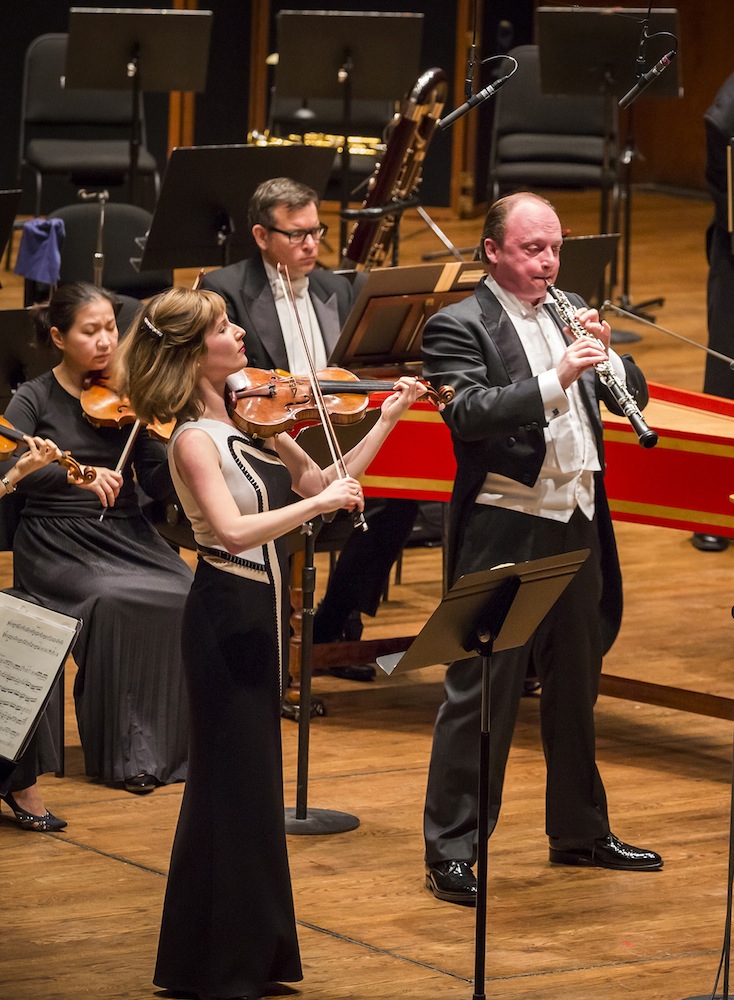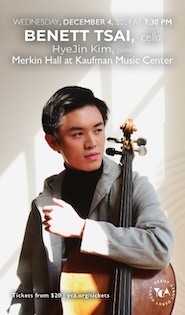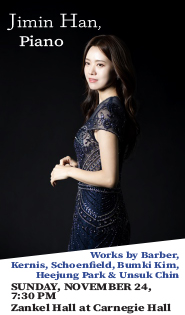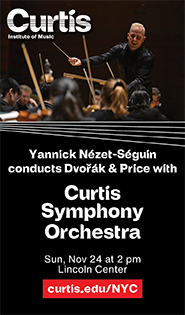Batiashvili and Leleux strike sparks in uneven Philharmonic concert

Lisa Batiashvili and François Leleux performed double concertos by Bach and Escaich Wednesday night at the New York Philharmonic. Photo: Chris Lee
Lisa Batiashvili has been delighting audiences at Avery Fisher Hall for the last few years. The New York Philharmonic’s artist-in-residence this season, the violinist’s solo turns with the orchestra have been consistently impressive for their musicality, expression, and technical refinement.
Batiashvili was in front of the Philharmonic again Wednesday night, this time with her husband, oboist François Leleux, under the direction of Alan Gilbert. The two were featured in Bach’s Concerto in C minor for Oboe, Violin, and Strings, and a new piece from French composer Thierry Escaich, his Concerto for Violin, Oboe, and Orchestra.
Leleux is the kind of musician who makes one wish that the repertoire for oboe soloists was as extensive as that for violinists. He has a creamy, warm tone, and superb breath support. He sounded great Wednesday night and played even better.
This was immediately apparent in the Bach concerto, which opened the evening. His oboe darted in and out, pushing his expressive color and phrasing past the foreground, then receding into the role of sensitive, responsive accompanist to both Batiashvili and the orchestra. His musical choices were so intelligent that they sounded indisputably correct.
Violinist and oboist played the Bach with a judicious ad libitum quality infrequently heard in modern interpretations. They expressed the quality that they were listening to, and relishing how the notes fit together, finding equal satisfaction in their musical dialogue. The performance sounded marvelous.
Commissioned by Leleux, and the Philharmonic, Escaich’s concerto debuted in Hamburg in December, and these concerts mark the U.S. premiere. The work is a skillful, lively, and involving extension of the Bach concerto—in many ways, a subtle retrograde inversion.
But Escaich’s music is wholly different, starting with the dramatic and atmospheric opening statement from the orchestra. He transforms the original rhythms into a repeated, tapping pattern in the strings, and fragments of Bach’s concerto fly past, as if heard from a passing car. The explicit connection is mostly made by Escaich through taking a portion of a Bach phrase and extending it into very different music, like a fulsome, romantic violin line.
Escaich’s concerto also has an entirely different aesthetic purpose, with a substantial amount of sturm und drang, and a narrative sense of transformation. The slow, middle movement is particularly evocative, with the orchestral music moving upward in waves against steady, horizontal lines in the solo instruments, and there is a poignant contrapuntal dialogue between the orchestral and solo oboes, which was played by all with great feeling and communication.
In the final movement, bits of Bach’s opening Allegro burst through like the sun on a cloudy day. Escaich’s piece is much more than a reworking of Bach quotations, and a welcome variation on an indispensable pedigree.
The second half of the concert was, as impossible as this may seem, a wan performance of Shostakovich’s intense Symphony No. 10. Gilbert led what came off as an objective interpretation, though the weakness of the conception left one wondering if this impression was accidental or a conscious dramatic choice.
From the opening bars, there was none of the quiet, barely controlled tension that is inherent in the music. Shostakovich was the emblematic 20th-century composer, his long lines and abrupt violence carrying the sound of a man trying to hold onto his soul while enduring the arbitrary malevolence of an ideological age.
The musical thinking put great significance on dynamics and tempos—which were handled literally but thoughtlessly—but little on phrasing or expression. Whatever one thinks this music may be about—Stalin, Shostakovich, et al—it is about something, but there was no feeling and nothing gripping in the playing.
There was belated force in the second movement, but largely due to Shostakovich’s writing. The music making had no direction or edge, not even a blunt one, and the third movement missed Shostakovich’s irony completely. There was some spirited playing in the up-tempo music of the final movement, but the composer’s larger presence remained missing in action.
The program will be repeated 7:30 p.m. Thursday, and 8 p.m. Friday and Saturday. nyphil.org



